Italian-style communication is always a bit pompous; Lancia respects this tradition with an obscure “One car, four stories” concept for the Ypsilon. A story for the Cassina version, created in conjunction with the not-so-famous Italian furniture designer (a way of saying that this famous luxury, this famous ascent towards premium, is really a fiction), another story for the entire range (by the second “story”, we’re almost at the point of admitting that we’ve run out of ideas to feed this rather ludicrous concept), then two other stories, linked to the revelation of the HF versions of the little Lancia.
Let’s face it, the only thing these two models have in common is the name: HF and Rally 4 HF share only the general look and the logo. When it comes to the technical side of things, they couldn’t be more different : the Ypsilon HF is strictly electric, while the Rally 4 HF is as thermal as it gets. In this Italian-style theater, there is no unity of energy.
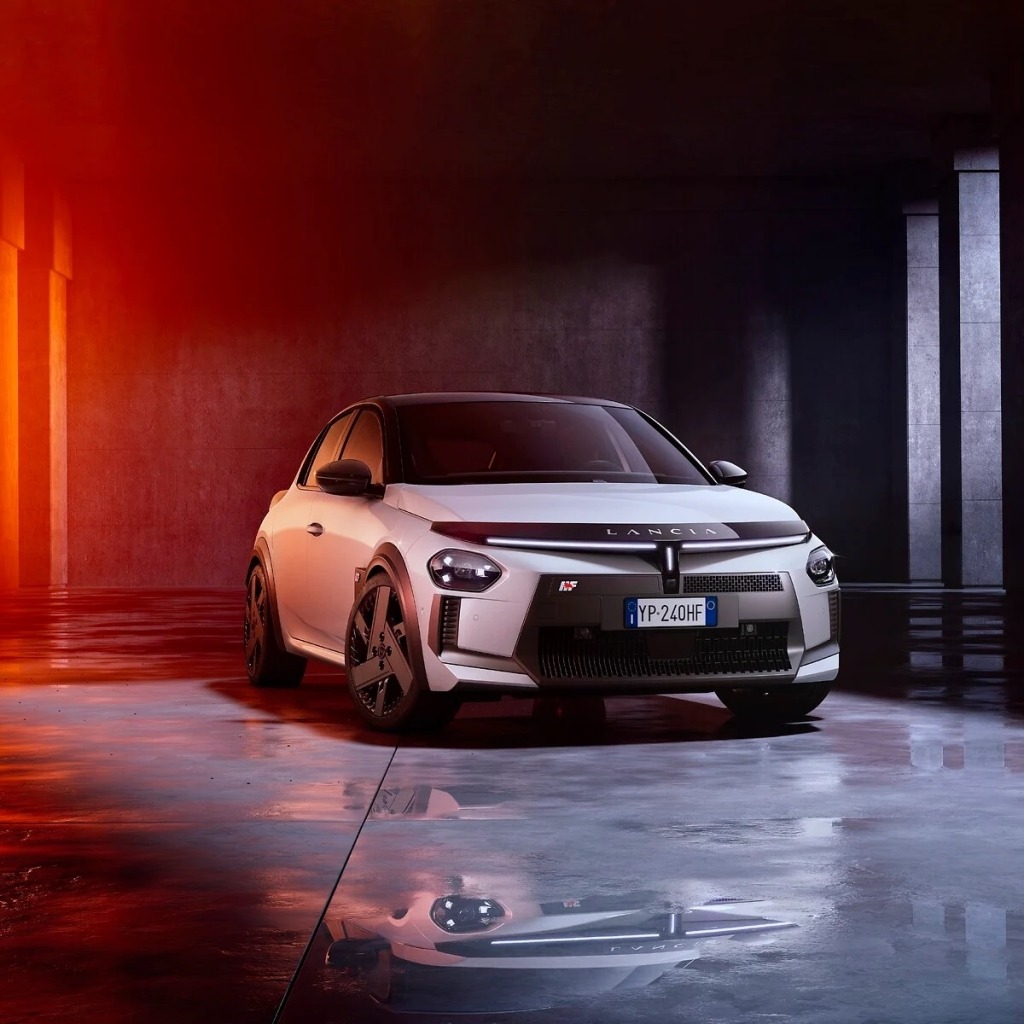
When the new model was unveiled, we knew that it would be available in a higher-performance version, adding just over eighty horsepower to the 156 of the standard version, which is no mean feat by any means, especially as it’s up to the front axle alone to digest the increase in power. As on the Fiat Abarth 600e, a mechanical limited-slip differential acts as a regulator, ensuring that the front always plays its steering role when the torque surges towards the tires.
As for the rest, the photos show a slightly reworked front end, with a large, dark yoke in the middle, housing the air intakes in an asymmetrical arrangement at the top, in the style of the Fiat Ritmo. A disconcerting detail: the four yokes, which we thought might be the prelude to openings intended for a high-performance version, disappear completely on this high-performance version. It’s actually quite natural : under the hood, there’s no engine to cool. So it’s best not to pretend.The Ypsilon Rally 4 HF, on the other hand, does open its four lids to ventilate its 212-hp turbocharged three-cylinder engine. 212, 212… 212… like the 208 R4? Yes, exactly. For the simple reason that it’s the same car, and therefore also a clone of the Corsa R4. Now, sharing platforms is all well and good, but when it comes to competition, at some point you have to ask yourself whether we’re not tending towards a monotype formula, where only appearance distinguishes models that are supposed to compete with each other.Still, it’s hard to deny oneself a little pleasure at seeing the Martini Racing colors once again emblazoned on this Lancia’s curved bodywork. It’s a bit like seeing your estranged parents having dinner together. We’re not entirely sure it will resurrect the wonders of the past, but it does give us the impression that Kevin1 has just put a little glitter in our lives, and that’s something.
The civilian version, on the other hand, is more low-profile. Apart from the front end, the rest of the car avoids overdoing it. No doubt for budgetary reasons (the bodywork remains strictly identical to the other versions of the Ypsilon, only the fittings have been adapted a little), no doubt also for styling reasons: the original version is already based on a design copious in styling elements, adding more would perhaps push the cork over the neck. But it’s also a question of maintaining a balanced position between the celebration of sport and the chic allure that the Ypsilon has always claimed. This is a small, bourgeois car, which could never adopt the attitude of a body-built Spartan.
On the outside, to be honest, the small cosmetic changes do the job. What works, and is almost self-sufficient, is the slight widening of the tracks. With the dark 18-inch wheels, and wheel arches slightly enlarged by discreet fender extensions, the car takes on a stockier look, more firmly planted on its wheels, which suits it well. It no longer has the frail appearance of the wiser versions, while retaining the cute look conferred by its curves and carefully detailed headlamps.
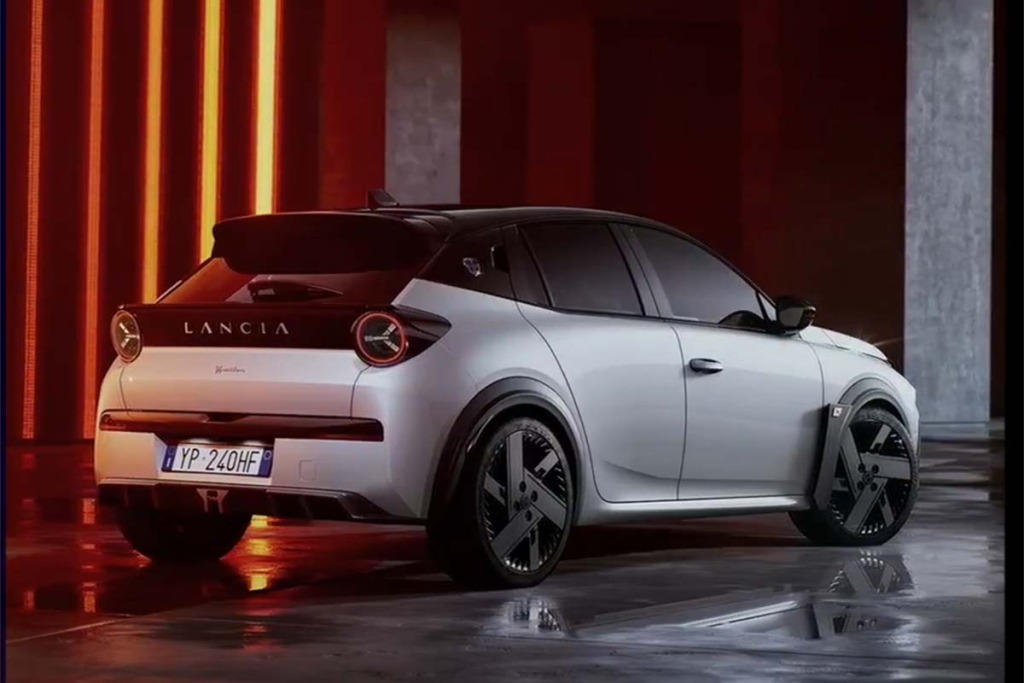
Note that this broadening, which gives the Ypsilon new shoulders, is not found on the rally version, which is therefore less sturdy than the civilian version, which has an impact on another styling device: on the electric Ypsilon HF, the designers integrated a spoiler on the rear side of the front fender, rather like on a Duster. On the Ypsilon destined for rallying, this is simply a black finish that takes the shape of the spoiler, without actually being one.
It’s inside that Lancia doesn’t even try to make an impression. The details that distinguish the HF version are too few and discreet to make a difference. A lower steering wheel spoke with the HF logo, upholstery that’s slanted towards the seats. Voila. In fact, as long as we don’t want to go to any unnecessary expense with this interior, we think we could have done without the pedestal table in the middle of the center console, whose preciousness doesn’t fit in well with the sportiness claimed by this model, especially as we’d like to see the center tunnel stripped of this artifice, and watch it plunge forward under the dashboard, without any further styling effect. And so much for induction charging. If it’s indeed the 51kwh battery that comes with this model, the real issue will be recharging the car, not the smartphone.
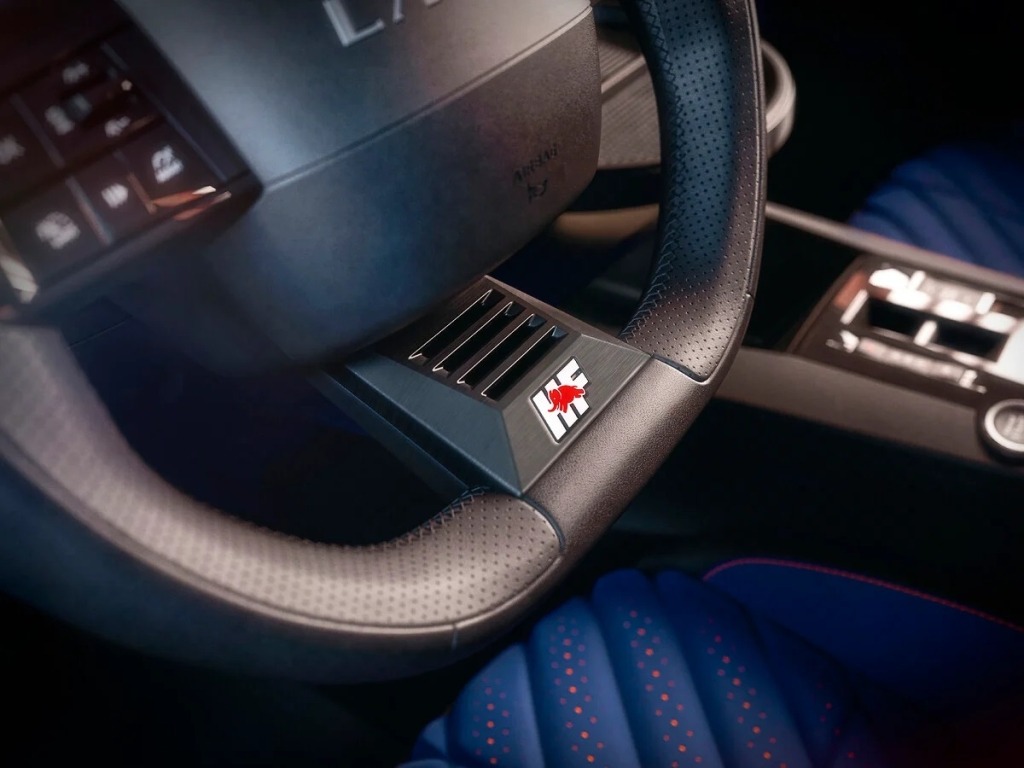
What everyone has in mind, when looking at the Lancia, is the projection onto the Peugeot 208 of its more muscular wheel arches, and by extension, the introduction under the hood of that more powerful electric motor. But we know that this evolution of the 208 won’t happen. No doubt because something has to be left for the Italian car, which would otherwise have nothing special to offer to attract customers. Could this cost Peugeot a few customers? Of course. But as long as they stay with Stellantis, it’s not so serious. We’ve understood the principle behind this production method: it doesn’t matter whether you buy a Peugeot, an Opel or a Lancia. Either way, you’re buying Stellantis. What one brand doesn’t make, another will make for the whole entity. Of course, Peugeot will have to be able to offer specific features likely to attract customers to the lion, who will find there what they would not have found elsewhere. As we all know, the next 208’s uniqueness will not lie in the specific power delivered by its engine. It will be the Hypersquare, the interface that will replace the steering wheel, benefiting from the introduction of steer-by-wire steering, which will undoubtedly allow an even more innovative interior architecture than the one we already know from Peugeot. Does this make up for the absence of the 208 GTI 2.0? Not really. But would a 240 hp electric 208 really be a new GTI? It’s doubtful. True fans of the ancestor would probably be dubious about what could hardly be considered a sincere homage. And with this kind of model, if you’re dubious, you don’t buy. Strictly speaking, Lancia doesn’t have this problem: the Ypsilon never existed in an HF version. In a way, it can’t disappoint, since it has no yardstick against which to measure itself. Things are going to be more complicated, because when the brand brings out a Lancia HF, people will be much, much more critical. When that day comes, everyone will remember that those initials stand for Haute Fidélité, and it’s hard to see how the next Delta HF could be anything but a disappointment compared to its ancestor.For the moment, the old Ypsilon having been what it was, it’s hard for the new one to disappoint, as Lancia has come a long, long way. That’s what’s so surprising about the strategy of granting it privileges. But in the end, it’s quite logical: if the brand is to regain its former lustre, it needs to stand out from the crowd. Stellantis’ challenge is to define exclusivity in sufficiently different ways that several exclusive brands can coexist without stepping on each other’s toes. You may regret it, you may be disappointed, you may even disagree with it, but that doesn’t change the fact that it’s quite logical. Is it the right bet? Only time will tell. But after all, by not putting all its eggs in one basket, Stellantis is certainly diluting success, but it’s also spreading the risk. Everyone understands that the 208 can be one of the best-selling cars in its class, and even the very best, without having to resort to a sporty version. Lancia, more than Peugeot, needs a flagship model to attract attention and reinforce its image, even if this is now a little artificial.The Ypsilon HF does its best not to be a reckless risk-taker, while at the same time giving the impression of being unconventional. In the Preface to his Histoire de la folie, Michel Foucault places three quotations whose source he does not give, three somewhat mysterious passages that seem to go beyond any possible author. The last one reads: “Develop your legitimate strangeness”. In the eyes of the members of Stellantis, and in the eyes of the world, this is what the Ypsilon HF is all about, being true only to itself.
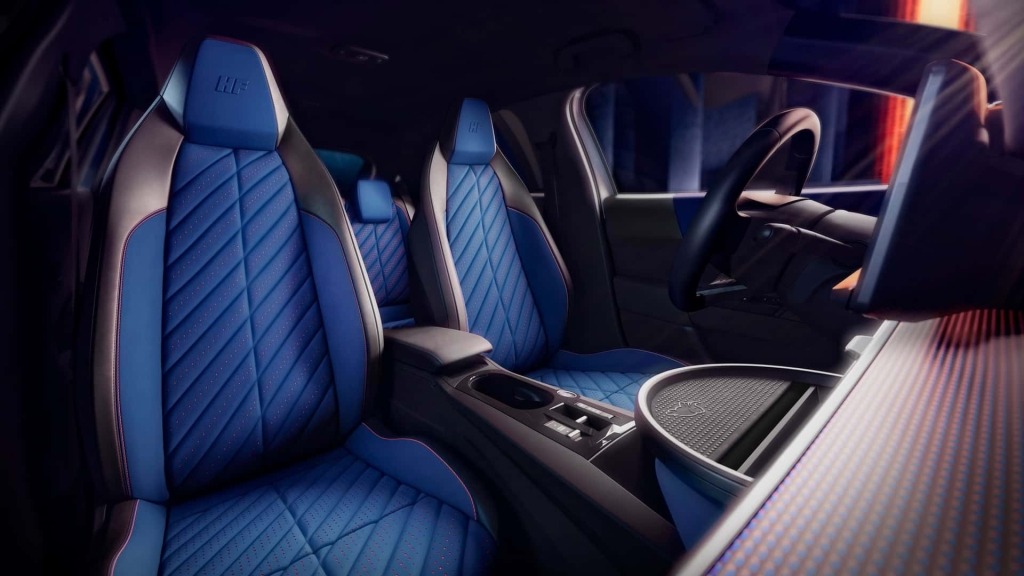
Postscript
We were talking about the air vents on the front. Since this article went online, we’ve discovered photos of the petrol versions of the Ypsilon. And these answer the questions we’d been asking about these openings: they’re now open, to ventilate the three-bladed mill that turns behind them. There are also new wheels, and new upholstery, very red. Very, very red.
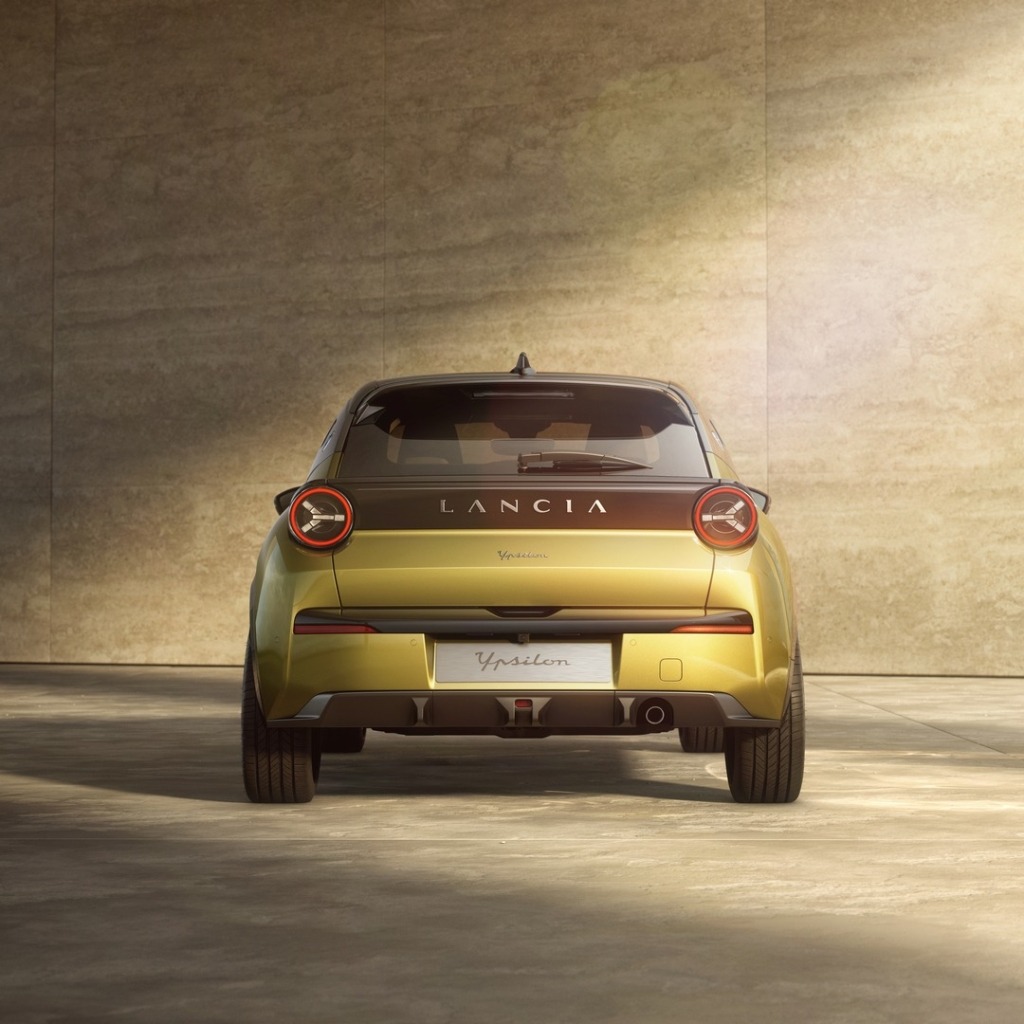
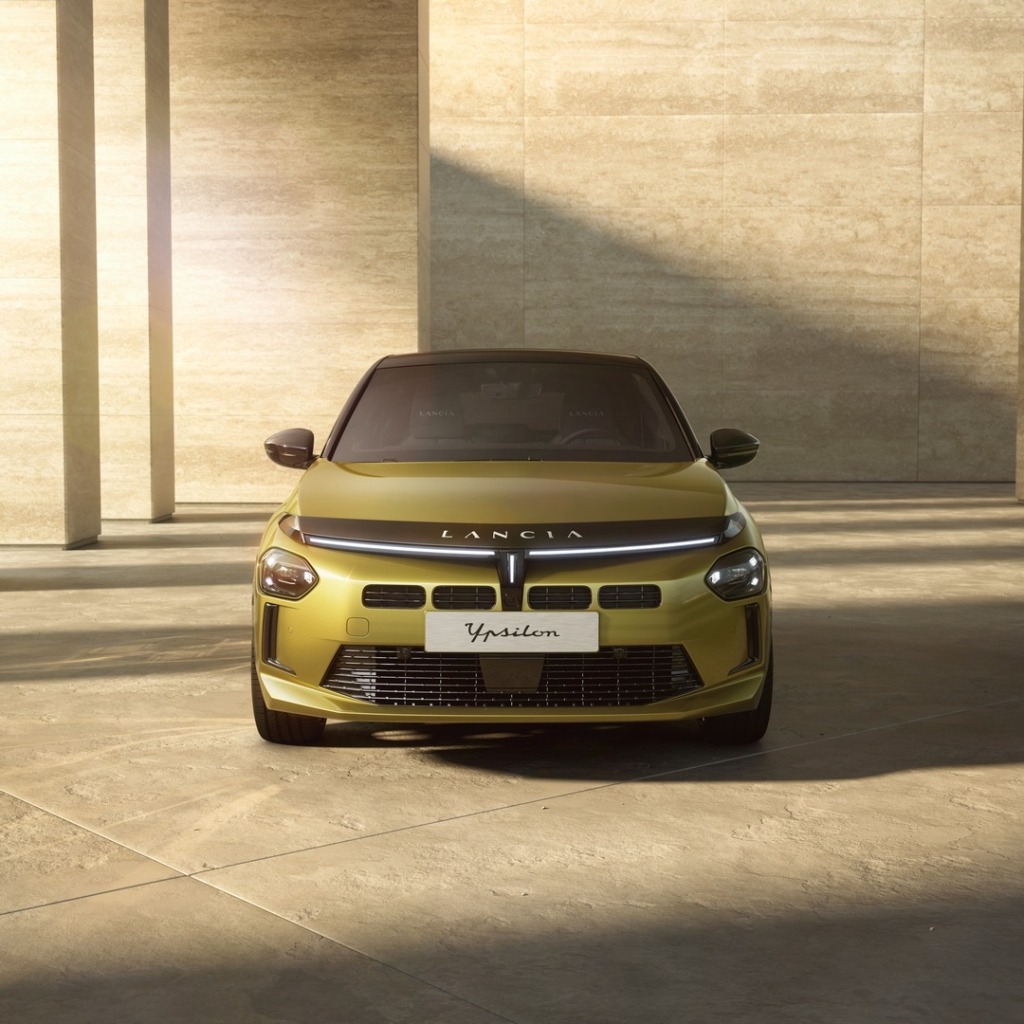
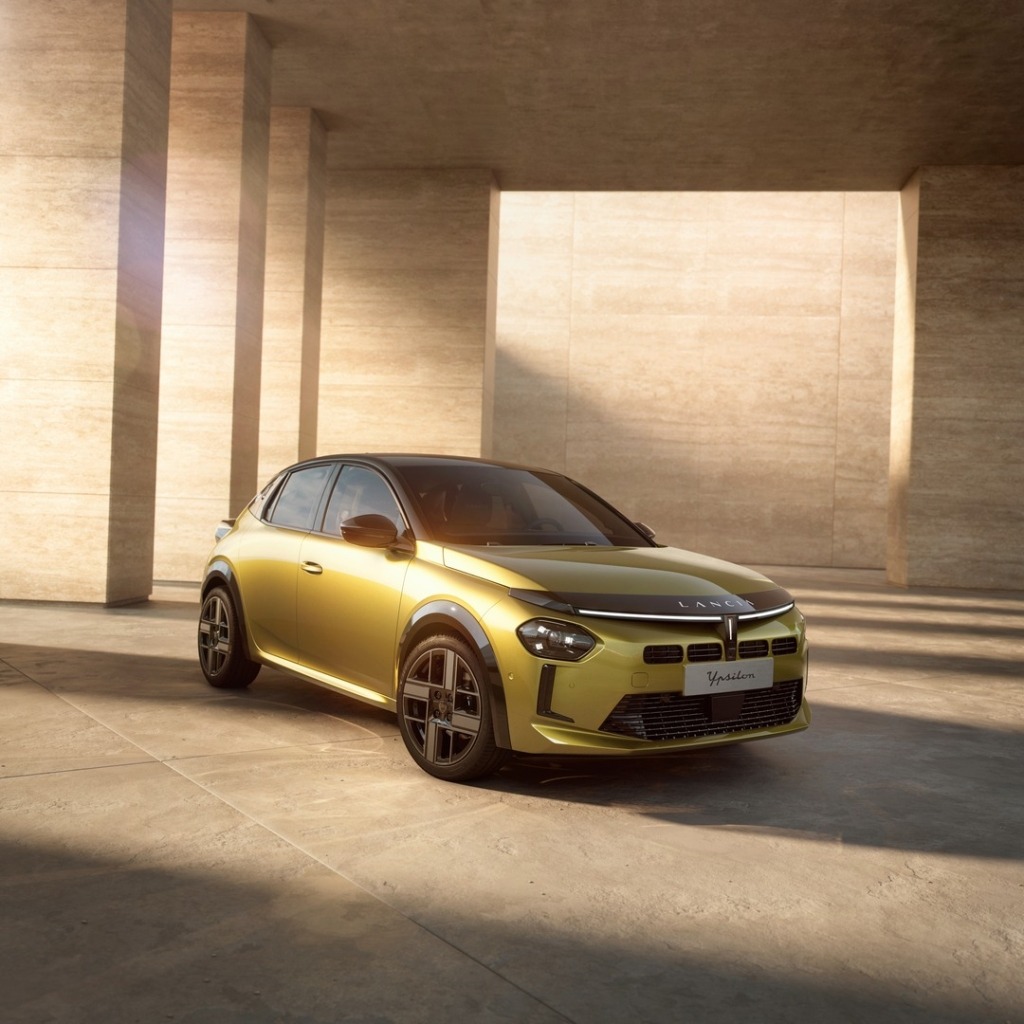
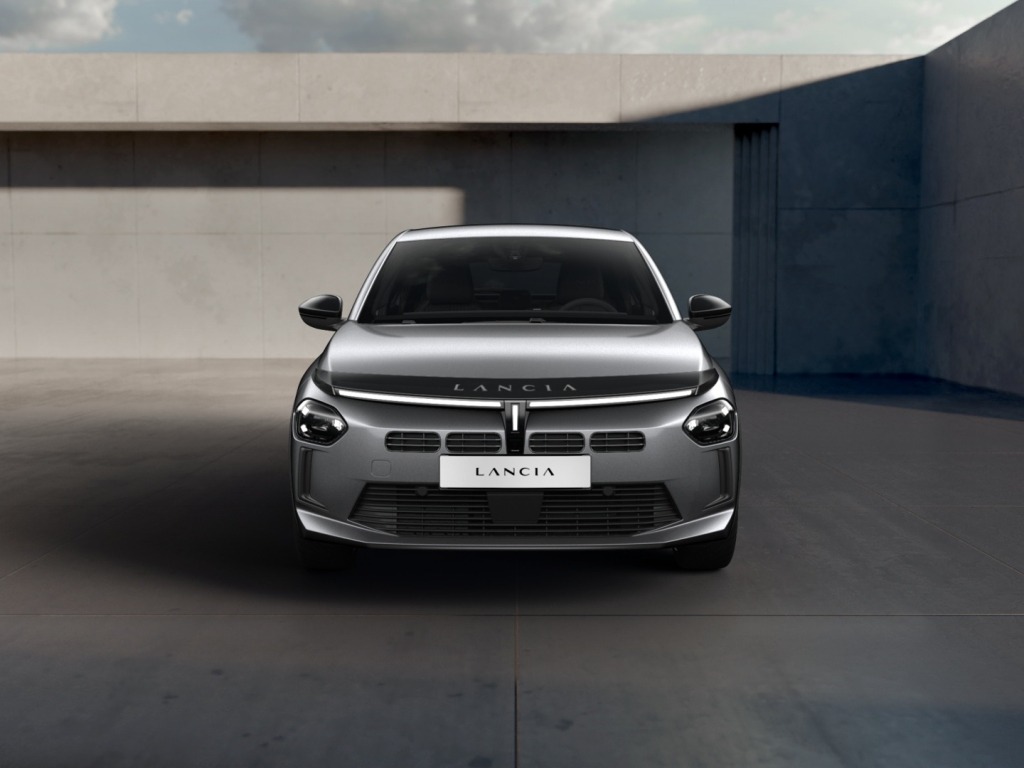
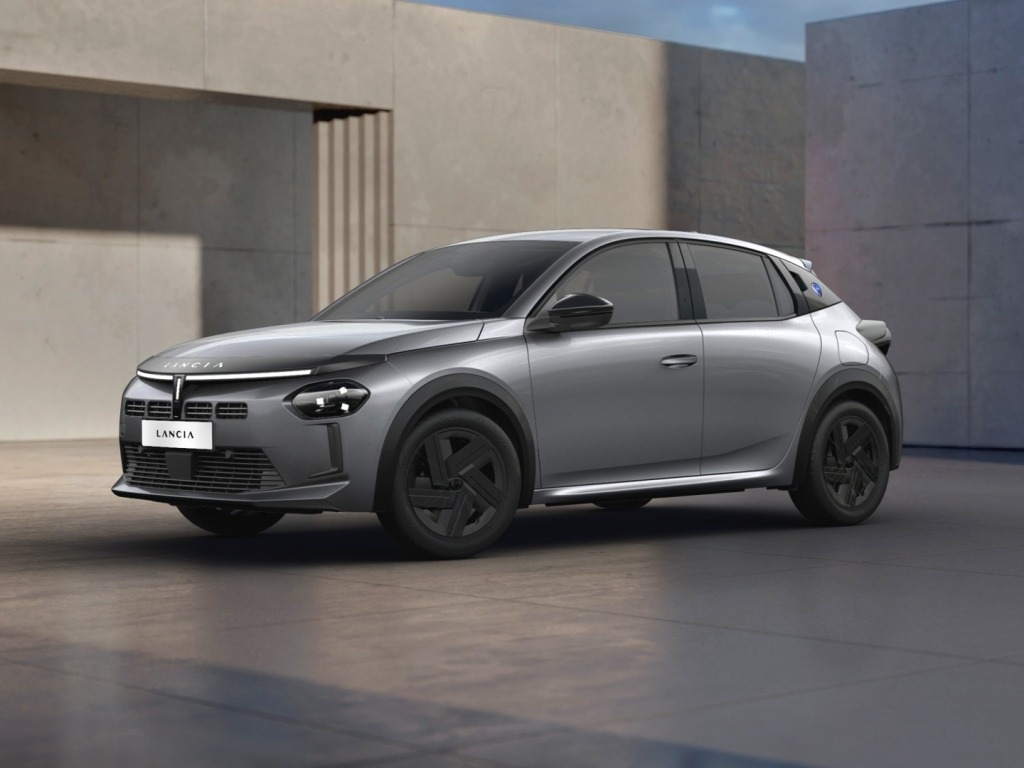
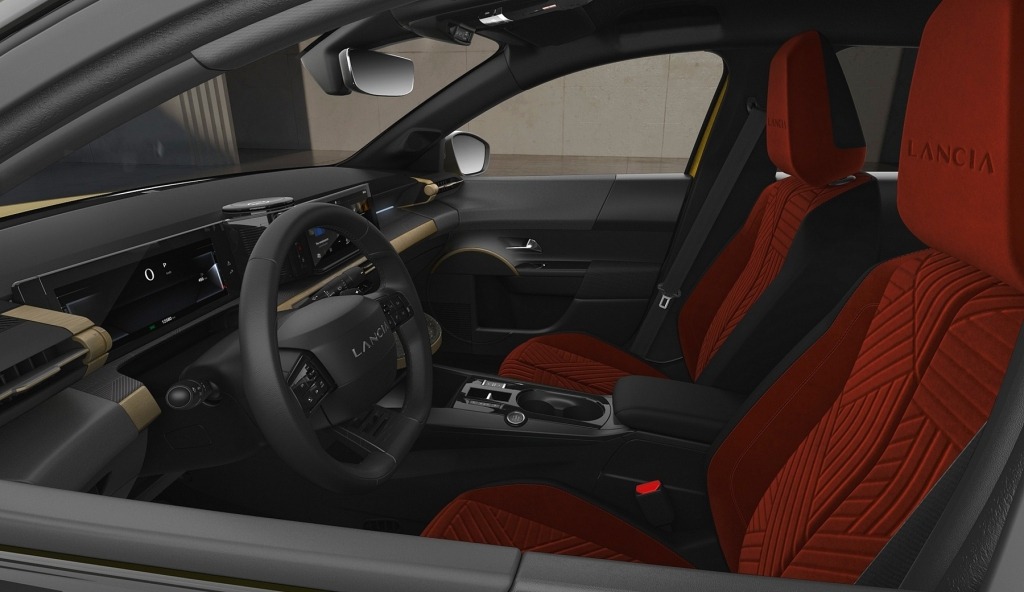
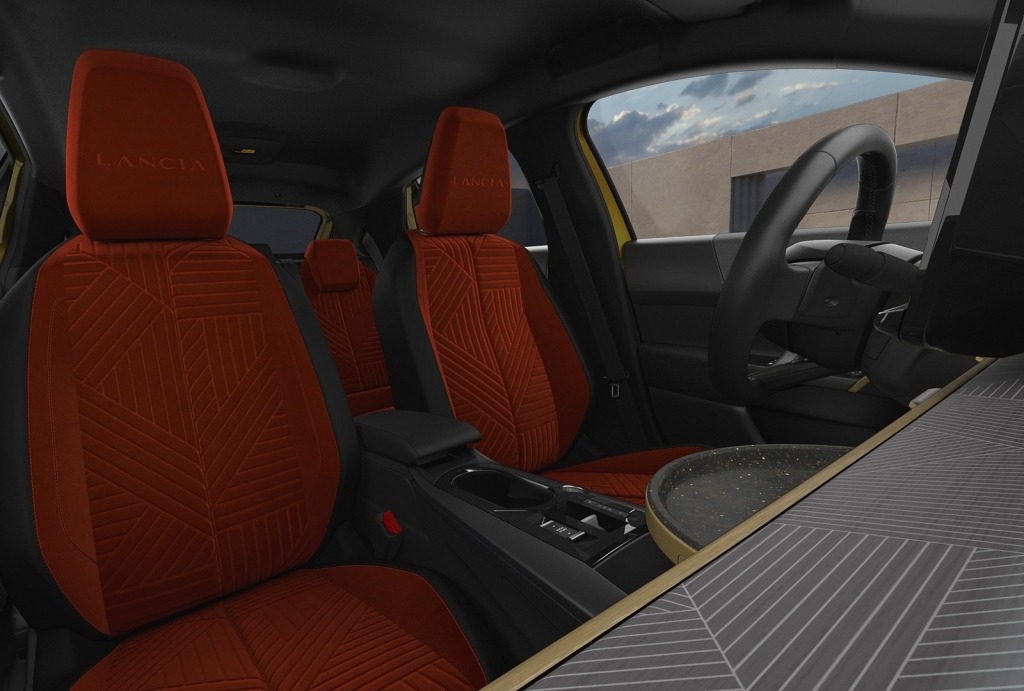
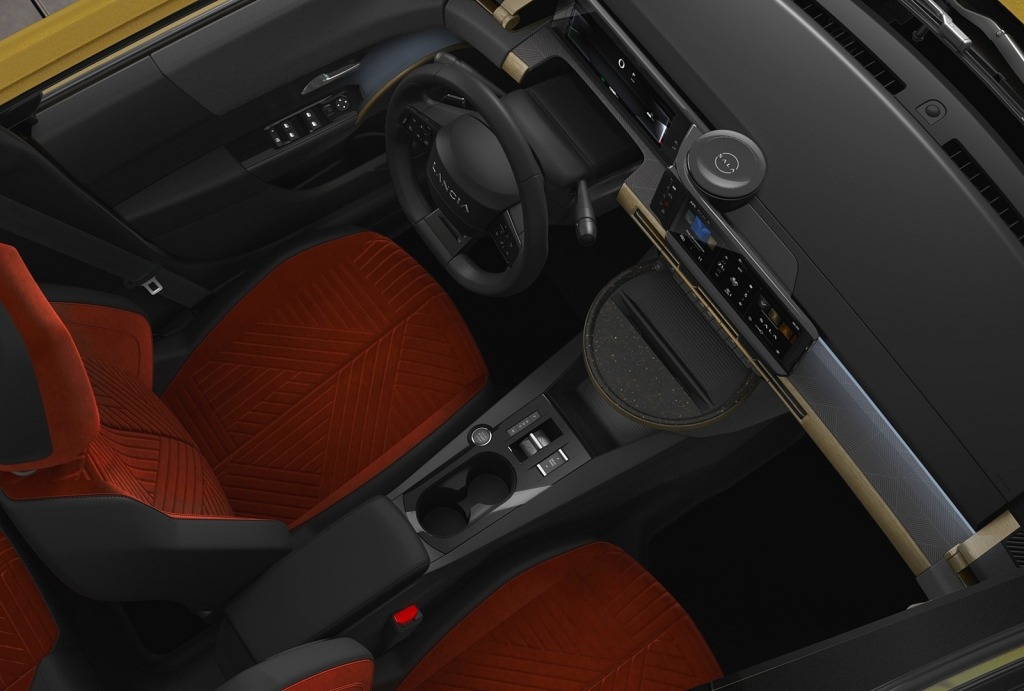
- If you’re not french, this joke is absolutly unintelligible. And impossible to explain. Being french must remain a privilege ! ↩︎